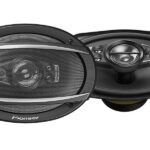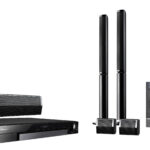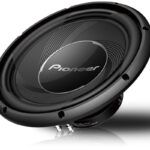An RMS subwoofer is a type of speaker that is specifically designed to reproduce low-frequency sounds with high power and accuracy. It provides deep bass and enhances the overall audio experience.
When you want to add some boom to your music or movies, an RMS subwoofer is the way to go. This specialized speaker delivers powerful and precise low-frequency sounds, making your audio come alive with deep, rumbling bass. Whether you’re cranking up the volume for a party or enjoying a movie night at home, the RMS subwoofer will give you that extra punch in the low end, immersing you in rich, immersive sound.
We will explore the features and benefits of RMS subwoofers, as well as provide some tips for choosing the right one for your audio setup.
Understanding The Basics Of Rms Subwoofers
A RMS subwoofer is a type of subwoofer that is designed to provide low-frequency sounds, or bass, in an audio system. It is important to understand the basics of RMS subwoofers in order to make an informed decision when purchasing one.
The purpose of a subwoofer is to reproduce low-frequency sounds that are not adequately produced by other speakers in an audio system. A subwoofer enhances the overall listening experience by adding depth and impact to the sound. The RMS (Root Mean Square) is a measurement of the continuous power that a subwoofer can handle or deliver without distortion.
RMS plays a crucial role in subwoofers as it determines their power handling capability and overall performance. It indicates the sustained power output that the subwoofer can handle for an extended period of time, ensuring optimal performance and preventing damage to the speaker.
RMS differs from peak power, which refers to the maximum power a subwoofer can handle for short bursts. While peak power is important, RMS is a more reliable measurement for determining a subwoofer’s true power capabilities.
The importance of RMS in subwoofer performance cannot be understated. It ensures that the subwoofer operates efficiently and delivers clean, distortion-free bass. When choosing a subwoofer, it is essential to consider the RMS power rating and match it to the amplifier’s power output to achieve the best results.
Factors To Consider When Choosing An Rms Subwoofer
Factors to Consider When Choosing an RMS Subwoofer:
Matching the RMS of the subwoofer with the amplifier is crucial for optimal performance. This ensures that the subwoofer can handle the power output of the amplifier without distortion or damage. Pay attention to the RMS ratings of both the subwoofer and the amplifier to make sure they are compatible.
The sensitivity and RMS ratings of the subwoofer are also important factors to consider. Higher sensitivity ratings indicate that the subwoofer can produce louder sound with less power input. The RMS rating determines the continuous power handling capabilities of the subwoofer, indicating the amount of power it can handle over time.
Consider the frequency response range of the subwoofer. A wider range allows for better reproduction of low-frequency sounds, resulting in more impactful bass. Look for a subwoofer that can deliver deep, clean bass notes across the entire frequency spectrum.
The enclosure type and size of the subwoofer can also affect its performance. Different enclosure types, such as sealed or ported, produce different sound characteristics. The size of the subwoofer should be suitable for your space and desired audio output.
Benefits Of Using A High Rms Subwoofer
A high RMS subwoofer offers several benefits that enhance your audio experience. One of the key advantages is its enhanced low-frequency response. This means that the subwoofer can reproduce deep bass tones with great precision and clarity, resulting in a more immersive soundstage.
Another benefit is the improved bass accuracy and clarity provided by a high RMS subwoofer. It allows for a more accurate reproduction of bass notes, ensuring that you can hear every detail of the music or movie soundtrack.
In addition, a high RMS subwoofer offers increased dynamic range. This means that it can handle both soft and loud sounds with ease, providing a more realistic and impactful listening experience.
Furthermore, using a high RMS subwoofer can help reduce distortion at higher volumes. This is particularly important when playing music or watching movies at louder levels, as it ensures that the audio remains clear and free from unwanted distortion.
In summary, a high RMS subwoofer is a valuable addition to any audio setup, providing enhanced low-frequency response, improved bass accuracy and clarity, increased dynamic range, and reduced distortion. Whether you enjoy music or movies, a high RMS subwoofer can greatly enhance your listening experience.
Tips For Properly Setting Up An Rms Subwoofer
A properly set up RMS subwoofer is key to achieving optimal bass response in your audio system. Positioning the subwoofer correctly is the first step. Place it near a wall or corner for enhanced bass reinforcement. Experiment with different locations to find the best spot for your room.
Next, it’s important to balance the subwoofer with your main speakers. Adjust the volume levels of both the subwoofer and the speakers to achieve a seamless integration of sound. This will ensure that the bass blends well with the overall audio.
Adjusting crossover and phase settings is another important aspect. The crossover setting determines the frequency range at which the subwoofer takes over from the main speakers. Set it to a level that complements your system’s capabilities. The phase setting ensures that the subwoofer’s sound aligns with that of the main speakers for a cohesive listening experience.
Lastly, consider utilizing room acoustic treatments. These can help to minimize reflections and standing waves, resulting in a more accurate bass response. Options include bass traps, diffusers, and absorbers. Experiment with different placements and combinations to find the best setup for your space.
Common Mistakes To Avoid When Using An Rms Subwoofer
An RMS Subwoofer is a powerful audio component that can enhance your audio experience. However, there are some common mistakes that you should avoid when using one. Firstly, overpowering or underpowering the subwoofer can lead to poor sound quality and possible damage to the equipment. It is crucial to match the wattage of the subwoofer with the amplifier or receiver. Secondly, neglecting to set proper crossover frequencies can result in unbalanced audio output. Adjusting the crossover frequency ensures that the subwoofer works in harmony with the other speakers. Another mistake is placing the subwoofer in an acoustically unfavorable location. Incorrect placement can negatively impact the bass response and overall sound quality. Lastly, not calibrating the subwoofer to the room’s dimensions can lead to inconsistencies in sound reproduction. Proper calibration accounts for room size and shape, ensuring optimal performance. By avoiding these mistakes, you can maximize the potential of your RMS subwoofer and enjoy immersive audio.
Conclusion
To sum up, an RMS subwoofer is an essential component for avid audio enthusiasts. With its ability to handle continuous power output, it ensures optimal performance and enhanced bass reproduction in audio systems. By understanding the importance of RMS power rating and the role it plays in subwoofer selection, you can elevate your listening experience to new heights.
So, make an informed choice and immerse yourself in the world of powerful, deep bass. Discover the wonders an RMS subwoofer can bring to your audio setup today.
Frequently Asked Questions Of What Is Rms Subwoofer
What Is The Meaning Of Rms In A Subwoofer?
The RMS (Root Mean Square) in a subwoofer refers to the continuous power handling capability. It indicates the highest amount of power that a subwoofer can handle on a continuous basis without causing any damage. A higher RMS rating means better durability and ability to handle power without distortion.
What Are The Advantages Of Using An Rms Subwoofer?
Using an RMS subwoofer has several advantages. It provides deep and powerful bass, enhances the overall audio experience, and adds realism to music and movies. Additionally, RMS subwoofers are more efficient, allowing for better sound quality at lower volumes. They also produce less distortion and can handle higher power levels without overheating.
How Does An Rms Subwoofer Differ From Peak Power?
While peak power indicates the maximum power a subwoofer can handle for short bursts, RMS power rating represents the continuous power handling capability. Peak power is often misleading and does not provide accurate information about performance. RMS rating, however, gives a more reliable indication of a subwoofer’s power handling abilities for sustained usage.
How To Choose The Right Rms Subwoofer For My Audio System?
Choosing the right RMS subwoofer requires consideration of various factors. These include the size of your room, the type of music or movies you enjoy, and your budget. It is important to match the RMS power rating of the subwoofer with the amplifier’s output power.
Additionally, consider the enclosure type, sensitivity, and frequency response for optimal performance.








